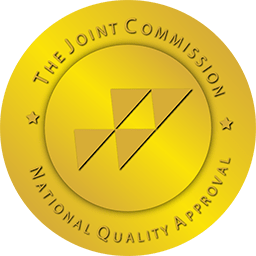Fentanyl addiction is a serious and deadly problem that is sweeping the globe. It’s a synthetic opioid that is 50-100 times more powerful than morphine, and it has claimed countless lives. Breaking the chains of fentanyl addiction is not easy, but it is possible. In this comprehensive guide to treatment, we will explore the different types of treatment available, the signs and symptoms of fentanyl addiction, and how to find the right help for you or your loved one. Whether you’re struggling with addiction yourself or supporting someone who is, this guide will provide you with the information and resources you need to break free from the grip of fentanyl addiction. From detoxification to counseling and support groups, we will cover everything you need to know to take the first steps towards recovery. Let’s start the journey towards a brighter, healthier future together.
Understanding Fentanyl Addiction
Fentanyl is a synthetic opioid that is prescribed to manage severe pain, such as pain from cancer or after surgery. It works by binding to the brain’s opioid receptors, which control pain, pleasure, and emotional responses. When taken in the right doses, fentanyl can be an effective painkiller. However, because it is so powerful, it is also highly addictive. Many people who become addicted to fentanyl start by taking it as prescribed, but over time, they need higher doses to achieve the same pain relief. This can lead to physical dependence, where the body becomes reliant on the drug to function normally.
The Causes of Fentanyl Addiction
Fentanyl addiction can happen to anyone, regardless of age, gender, or background. There are many factors that can contribute to the development of addiction, including genetics, environment, and mental health. Some people may be more susceptible to addiction due to their genetic makeup, while others may develop addiction as a way to cope with stress or trauma. Environmental factors, such as peer pressure or exposure to drugs, can also increase the risk of addiction. Mental health issues, such as depression or anxiety, can also contribute to the development of addiction.
Signs and Symptoms of Fentanyl Addiction
The signs and symptoms of fentanyl addiction can vary from person to person, but some common signs include:
- Using fentanyl even when it is no longer needed for pain relief
- Taking higher doses than prescribed or using it more often than directed
- Withdrawal symptoms when not using the drug, such as nausea, vomiting, and muscle aches
- Continued use despite negative consequences, such as legal or financial problems
- Neglecting responsibilities, such as work or school
- Changes in behavior or mood, such as irritability or depression
If you or someone you know is experiencing any of these symptoms, it’s important to seek help as soon as possible.
The Dangers of Fentanyl Addiction
Fentanyl addiction is not only dangerous but deadly. Because it is so powerful, even a small overdose can be fatal. In fact, fentanyl is responsible for a significant number of overdose deaths each year. In addition to the risk of overdose, long-term use of fentanyl can lead to a range of health problems, including respiratory issues, heart problems, and liver damage. It can also have a negative impact on mental health, leading to depression, anxiety, and other mood disorders.
Fentanyl Addiction Treatment Options
There are several options for fentanyl addiction treatment, including:
Inpatient vs. Outpatient Treatment
Inpatient treatment involves staying at a treatment facility for a set period of time, typically 30 to 90 days. This type of treatment is typically recommended for people with severe addiction or those who need a high level of medical supervision. Outpatient treatment involves visiting a treatment center on a regular basis for counseling and medication management. This type of treatment is typically recommended for people with less severe addiction or those who are unable to take time away from work or family obligations.
Medications used in Fentanyl Addiction Treatment
There are several medications that can be used to manage fentanyl addiction, including methadone, buprenorphine, and naltrexone. Methadone and buprenorphine are opioid agonists, which means they work by binding to the same receptors in the brain as fentanyl but in a less powerful way. This can help to reduce withdrawal symptoms and cravings. Naltrexone is an opioid antagonist, which means it blocks the effects of opioids in the brain. This can help to reduce cravings and prevent relapse.
Therapies used in Fentanyl Addiction Treatment
Therapy is an important part of fentanyl addiction treatment. There are several types of therapy that can be used, including cognitive-behavioral therapy (CBT), individual therapy, and group therapy. CBT helps people to identify and change negative thought patterns and behaviors that contribute to addiction. Individual therapy allows people to work one-on-one with a therapist to explore personal issues that may be contributing to addiction. Group therapy provides a supportive environment where people can share their experiences with others who are going through similar struggles.
Support Groups for Fentanyl Addiction
Support groups are another important part of fentanyl addiction treatment. There are several types of support groups available, including 12-step programs like Narcotics Anonymous (NA) and SMART Recovery. These groups provide a supportive environment where people can share their experiences, gain support and encouragement from others, and learn coping skills to help them manage addiction.
Aftercare for Fentanyl Addiction Treatment
Aftercare is an important part of fentanyl addiction treatment. This can include ongoing therapy, support group meetings, and regular check-ins with a healthcare provider. It’s also important to make lifestyle changes that support recovery, such as avoiding triggers, practicing self-care, and building a strong support network.
Finding the Right Treatment Program
Finding the right treatment program is essential for recovery from fentanyl addiction. It’s important to consider factors such as the type of treatment, the qualifications of the staff, the location, and the cost. It’s also important to choose a program that is tailored to the individual’s needs and preferences.
Conclusion
Fentanyl addiction is a serious and deadly problem, but it is possible to break free from its grip. With the right treatment and support, people can recover from addiction and build a brighter, healthier future. Whether you’re struggling with addiction yourself or supporting someone who is, it’s important to seek help as soon as possible. By understanding the signs and symptoms of addiction, exploring treatment options, and finding the right program, you can take the first steps towards recovery. Remember, you are not alone in this journey. With the right tools and support, you can break the chains of fentanyl addiction and build a brighter future.
To get help recovering from addiction and learn how to manage life’s daily stressors without drugs or alcohol, contact one of our knowledgeable, compassionate and helpful staff members today by dialing 833.970.2054.











